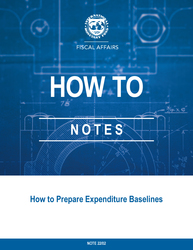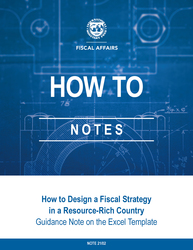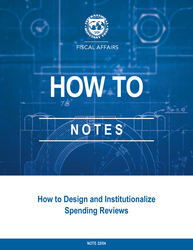
How to Prepare Expenditure Baselines
This note aims to clarify and establish a framework that covers baselines’ various purposes and uses.
READ MORE...
Volume/Issue:
Volume 2022
Issue 002
Publication date: June 2022
ISBN: 9798400210129
$5.00
Add to Cart by clicking price of the language and format you'd like to purchase
Available Languages and Formats
| English |
Prices in red indicate formats that are not yet available but are forthcoming.
Topics covered in this book
This title contains information about the following subjects.
Click on a subject if you would like to see other titles with the same subjects.
Labor , Economics- Macroeconomics , Public Finance , Economics / General , expenditure baselines , economic policies , ministry of finance , line ministries and agencies , social welfare , pension spending , budget frameworks , expenditure baseline , publication order , publication service , baseline projection , spending needs , baseline expenditure , budget negotiations , Budget planning and preparation , Wages , Fiscal space , Wage adjustments , Africa
Summary
Expenditure baseline projections (hereafter, “base¬lines”) are a key analytical concept in budget preparation that refers to estimates of future expenditure on the assumption that current policies remain unchanged. They serve as reference points against which other data, such as proposed or approved budgets, or expenditure ceilings, can be compared. In many countries they are a basic tool for starting the preparation of the budget. They represent neither future spending allocations nor total expected outturn as they do not incorporate estimates of the cost of new policies and the expected impact of saving measures. Other features of baselines are that they are generally produced over a multiyear period, they can be calcu¬lated at any level or form of the budget classification (that is, ministries, economic classification, specific policies, functions or programs), and can be summed up to higher levels (such as the whole budget). Hence, they can be useful at both a micro and an aggregate level. This note aims to clarify and establish a framework that covers baselines’ various purposes and uses. It first discusses the definition and objectives of baselines and the methodology used for producing them before outlining how they should be prepared. It concludes with a discussion of the key success factors for making the most effective use of baselines.
Copyright © 2010 - 2025
Powered by:
AIDC



